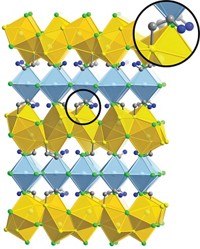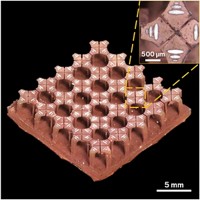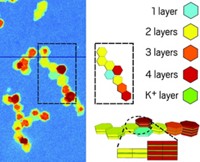Advertisement
Grab your lab coat. Let's get started
Welcome!
Welcome!
Create an account below to get 6 C&EN articles per month, receive newsletters and more - all free.
It seems this is your first time logging in online. Please enter the following information to continue.
As an ACS member you automatically get access to this site. All we need is few more details to create your reading experience.
Not you? Sign in with a different account.
Not you? Sign in with a different account.
ERROR 1
ERROR 1
ERROR 2
ERROR 2
ERROR 2
ERROR 2
ERROR 2
Password and Confirm password must match.
If you have an ACS member number, please enter it here so we can link this account to your membership. (optional)
ERROR 2
ACS values your privacy. By submitting your information, you are gaining access to C&EN and subscribing to our weekly newsletter. We use the information you provide to make your reading experience better, and we will never sell your data to third party members.
Polymers
Tracking ion transport in organic radical polymers
Redox mechanism study reveals unexpected role for cations
by Mitch Jacoby
December 2, 2018
| A version of this story appeared in
Volume 96, Issue 48

A ready supply of thin, lightweight, flexible batteries could push development of stretchable and foldable electronics into high gear. For that reason, researchers have combed through libraries of organic compounds looking for high-performance electronic conductors. Organic radical polymers—molecules with radical sites hanging off a polymer backbone—recently jumped ahead of the pack, showing themselves to be promising electrode materials for fast-charging batteries. But the mechanism by which these polymers conduct charge has remained unclear, hampering their development. To sort out the details, especially the role of ion transport, a team led by Jodie L. Lutkenhaus of Texas A&M University devised a quartz crystal microbalance method to monitor nanogram-scale mass changes in a polymer electrode during charging cycles (Nat. Mater. 2018, DOI: 10.1038/s41563-018-0215-1). The electrochemical system consisted of PTMA, a poly(methyl methacrylate)–based polymer with pendant nitroxyl radical groups, infused with common lithium electrolyte solutions. The group found that as anions latch on to radical sites during redox reactions, sometimes the process causes unexpected expulsion of lithium ions from the polymer. That phenomenon, which can affect electrode performance, is controlled by choice of anion, electrolyte concentration, and reaction kinetics, handles that can be used to tune these materials for applications, the team says.





Join the conversation
Contact the reporter
Submit a Letter to the Editor for publication
Engage with us on Twitter